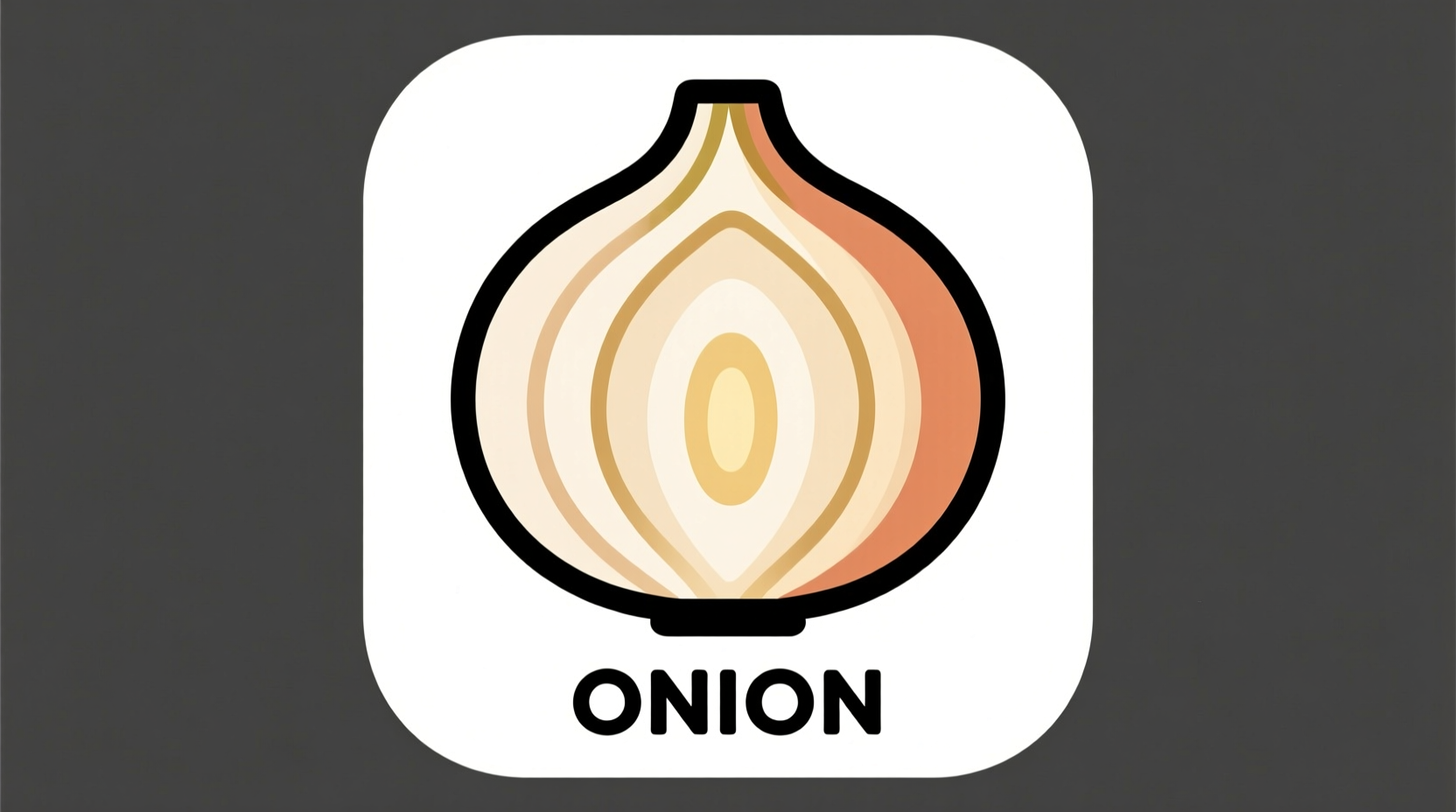Whether you're designing a cooking blog, creating educational materials about vegetables, or developing restaurant menu graphics, finding the right onion clip art can make or break your project. This guide provides practical solutions for locating, selecting, and properly using onion illustrations that match your specific needs.
Understanding Onion Clip Art Styles and Applications
Onion clip art comes in various artistic interpretations, each serving different design purposes. Recognizing these styles helps you select visuals that align with your project's tone and audience expectations.
Cartoon-style illustrations work well for children's educational materials and casual recipe blogs, featuring exaggerated shapes and vibrant colors. Realistic renderings are preferred for professional culinary publications and scientific diagrams where botanical accuracy matters. Minimalist line drawings suit modern design aesthetics, particularly for menu layouts and packaging design.
| Clip Art Style | Best Applications | Recommended Formats |
|---|---|---|
| Cartoon/Whimsical | Children's cookbooks, casual food blogs | PNG with transparent background |
| Realistic/Botanical | Culinary education, scientific materials | SVG or high-res PNG |
| Minimalist/Line Art | Menu design, packaging, modern websites | Vector formats (SVG, EPS) |
| Watercolor/Illustrative | Recipe cards, food magazines | High-quality PNG or TIFF |
Where to Find Quality Onion Clip Art Resources
Not all clip art repositories offer equally useful onion illustrations. Your search strategy should consider both quality and licensing requirements.
For educational projects, government agricultural resources often provide scientifically accurate vegetable illustrations. The USDA National Agricultural Library maintains a digital collection of botanical illustrations that includes detailed onion diagrams suitable for classroom use. These resources typically carry clear usage rights for educational purposes.
Designers working on commercial projects should explore curated marketplaces that verify both artistic quality and licensing clarity. Reputable platforms implement quality control measures that filter out poorly executed illustrations. When searching, use specific terms like "onion vector illustration" or "botanical onion drawing" to yield more precise results than generic "onion clip art" queries.

Format Considerations for Professional Results
The technical specifications of your chosen onion clip art significantly impact final output quality. Understanding format differences prevents common implementation issues.
Vector formats (SVG, EPS, AI) maintain crisp edges at any size, making them ideal for logos, packaging, and print materials where scaling is required. Raster formats (PNG, JPEG) work better for web use but require careful attention to resolution. For digital projects, 72 DPI suffices, while print materials demand 300 DPI minimum.
Transparency matters significantly for food illustrations. PNG files with alpha channels allow seamless integration into diverse backgrounds, essential when creating recipe cards or menu layouts. Avoid JPEG for illustrations requiring clean edges, as compression artifacts create halos around detailed elements like onion layers.
Copyright and Usage Guidelines You Must Know
Using clip art without understanding licensing terms risks legal complications. Copyright considerations vary significantly across resource types.
Public domain resources from government agricultural extensions typically allow unrestricted use, though attribution may be requested. Creative Commons licensed materials require careful attention to specific license terms - some prohibit commercial use or require derivative works to carry the same license.
Commercial marketplaces provide clear licensing documentation, but terms differ substantially between platforms. Standard licenses usually permit use in digital and print materials but restrict redistribution of the original asset. Extended licenses become necessary for merchandise production or large-circulation publications. Always verify usage rights before finalizing your design.
Practical Implementation Tips for Designers
Professional results require more than simply placing clip art into your layout. Consider these implementation techniques to maximize visual impact.
When incorporating onion illustrations into recipe content, maintain consistent styling across all vegetable elements. Mixing cartoon carrots with realistic onions creates visual dissonance that distracts readers. Create a style guide for your project that specifies line weight, color palette, and detail level for all botanical elements.
For educational materials, consider adding subtle annotations directly to the illustrations. A carefully placed label identifying onion layers or root structure transforms generic clip art into valuable teaching tools. Many vector editors allow non-destructive text addition that maintains editability for future adaptations.
Timeline of Clip Art Evolution in Food Illustration
Understanding how food clip art has evolved helps contextualize current resources and anticipate future trends. The progression from traditional to digital illustration reflects broader technological shifts in design workflows.
Early 1900s food illustrations were created through woodcut and engraving techniques, requiring significant artistic skill but offering limited reproduction quality. The 1950s introduced photomechanical reproduction, enabling more detailed botanical illustrations for agricultural publications. Desktop publishing in the 1980s revolutionized food illustration with early vector graphics programs. Today's AI-assisted illustration tools combine traditional artistic principles with algorithmic precision, creating highly detailed yet easily customizable food visuals.
Common Mistakes to Avoid with Onion Clip Art
Even experienced designers make preventable errors when implementing food illustrations. Recognizing these pitfalls saves time and ensures professional results.
Using low-resolution images for print materials creates blurry, unprofessional results. Always verify that your clip art meets minimum resolution requirements before finalizing layouts. Another common error involves ignoring color profiles - RGB files converted to CMYK without proper adjustment create unexpected color shifts in printed materials.
Many designers overlook the importance of consistent perspective. An onion illustrated from above works poorly alongside side-view vegetable illustrations. Maintain consistent viewing angles across all elements in your composition for visual harmony. When in doubt, create a small style guide showing approved orientations for each vegetable type in your project.











 浙公网安备
33010002000092号
浙公网安备
33010002000092号 浙B2-20120091-4
浙B2-20120091-4